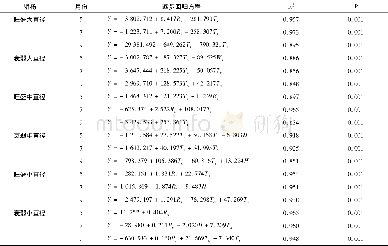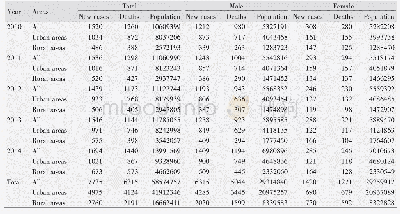《Table 1The zonality of the lead-lag regressions of U850 (between 45°and 65°N) and Z500 (between 30°
 提示:宽带有限、当前游客访问压缩模式
提示:宽带有限、当前游客访问压缩模式
本系列图表出处文件名:随高清版一同展现
《Two regimes of Atlantic multidecadal oscillation: cross-basin dependent or Atlantic-intrinsic》
Now we may explain the disappearance of the 50–80-year AMO in TPdepth and NPdepth experiments.Note the zonal symmetry of the atmospheric variability associated with the 50–80-year AMO not only appears in the simultaneous regression(Fig.2a),but also prevails in lead-lag regressions(Fig.S4 online).About half-period(30 years)prior to the maximum positive phase of AMO(AMOmax+),a negative NAO-like pattern prevails in the northern high-latitudes accompanied by enhanced westerly near 30°N and easterly anomalies between 40°and 60°N(Fig.S4a online),and also by the positive ocean heat content(OHC)and salinity anomalies in between the surface and 300 m depth(Fig.S4b and c online)in the Labrador Sea and the GIN Seas.This atmospheric pattern,i.e.,the northern cyclonic and southern anticyclonic anomalies,is dynamically consistent with the regressed oceanic BSF in Fig.4b,indicating an enhanced subpolar gyre and enhanced transport of warm and saline water to the GIN Seas(Fig.S4b and c online),consistent with recent observational and modeling study[30].The similar pattern lasts more than 15 years as shown in Fig.S4d–f(online),until about 8 years prior to the AMOmax+,when the pattern reverses to opposite sign.These features,and the quantitative zonality measurement(Table 1)shows that the zonality of atmospheric variability associated with the 50–80-year AMO is much larger than that of 10–30-year AMO,suggesting that the50–80-year AMO is a cross-basin dependent mode of multidecadalvariability.Indeed the zonality of atmospheric variability associated with the 50–80-year AMO in both the HadGEM2-ES(1.269for U850)simulation and reanalysis(1.357 for Z500)is also larger than their counterparts(0.42 for U850in HadGEM2-ES and 0.08for Z500in reanalysis)for the 10–30-year AMO.We may infer that,because the muting of Pacific variability destroys the zonality or global coherence of atmospheric variability(Table 1),and weakens the transport of warm and saline water into the GIN Seas,the 50–80-year AMO largely disappears in the TPdepth and NPdepth experiments.
| 图表编号 | XD0036051700 严禁用于非法目的 |
|---|---|
| 绘制时间 | 2019.02.15 |
| 作者 | Pengfei Lin、Zipeng Yu、Jianhua Lü、Mengrong Ding、Aixue Hu、Hailong Liu |
| 绘制单位 | State Key Laboratory of Numerical Modeling for Atmospheric Sciences and Geophysical Fluid Dynamics, Institute of Atmospheric Physics, Chinese Academy of Sciences、University of Chinese Academy of Sciences、State Key Laboratory of Numerical Modeling for Atmo |
| 更多格式 | 高清、无水印(增值服务) |





